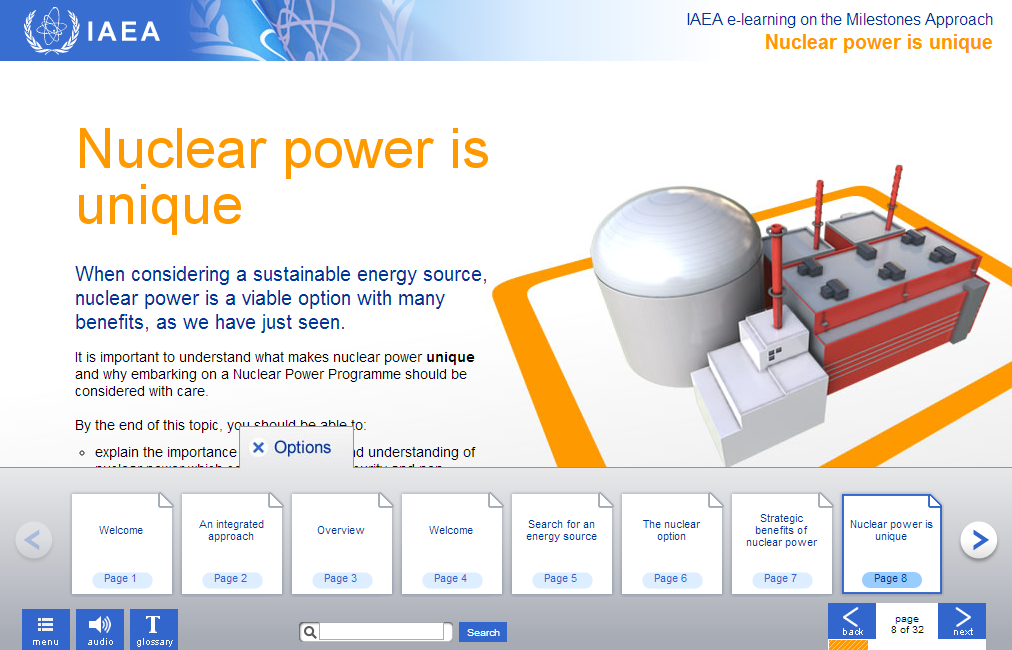As a designer, I maintain a pretty robust collection of e-learning samples to which I will gladly add this one that I found today. It's been developed by the International Atomic Energy Agency and has a very clean look. I found the navigation quite intuitive (albeit not very attractive), and several features of the course such as the glossary and the search bar are easy to find and use.
The IAEA created the interactive e-learning series explaining the IAEA’s Milestones Approach to introducing a nuclear power program. This approach is based on three phases and covers the 19 infrastructure issues that need to be addressed, and brings decades of expertise to life. If you're like me and enjoy collecting sample e-learning projects for future reference this isn't a bad one to add to your stash.
Click on the image below to take you to the samples, and enjoy!
Alex is a co-founder and Managing Member of Collabor8 Learning, LLC, an instructional design and performance management consultancy. His firm collaborates with organizations to enhance the way they develop and train their people. To learn more about Collabor8 Learning, click here.
Alex can be reached at 786-512-1069, alex@collabor8learning.com or via Twitter@collabor8alex.







